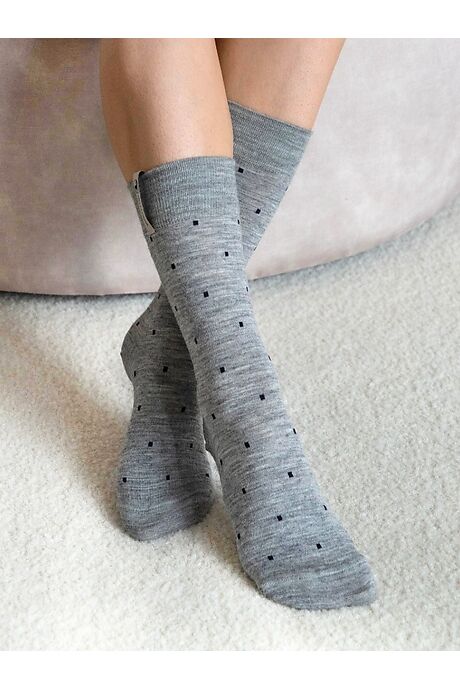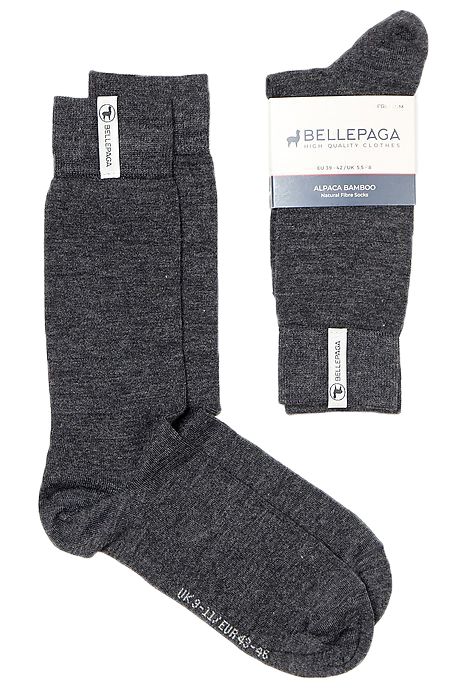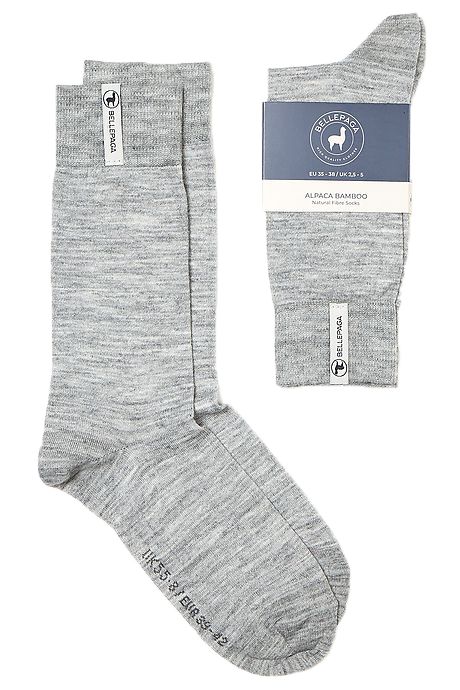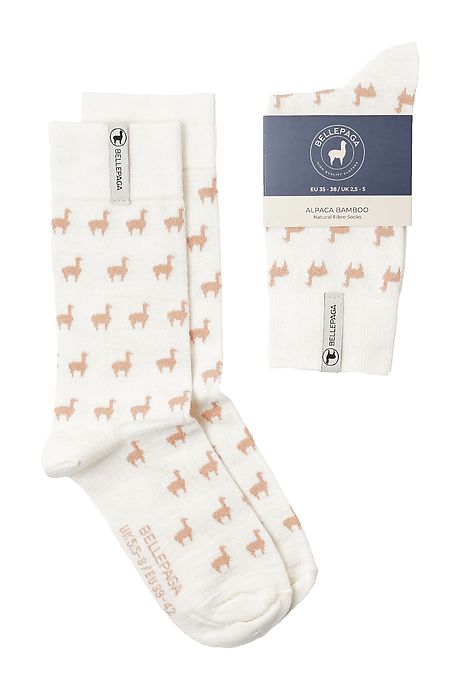Cashmere socks for men
Socks are a very small piece of fabric but have a big impact on our comfort. It is not for nothing that we use the expression: to feel good in your sneakers. And to feel good in your sneakers you need good socks. You will surely have noticed it by yourself, but finding a good pair of socks is much more complicated than what we imagine, especially as winter approaches! Indeed, we often try to keep warm and it starts with the feet. We then turn to what we think is the best quality: cashmere. But that without really knowing why, because we hear a lot about it, never having really informed ourselves. And if we told you that cashmere is not necessarily the material to privilege?
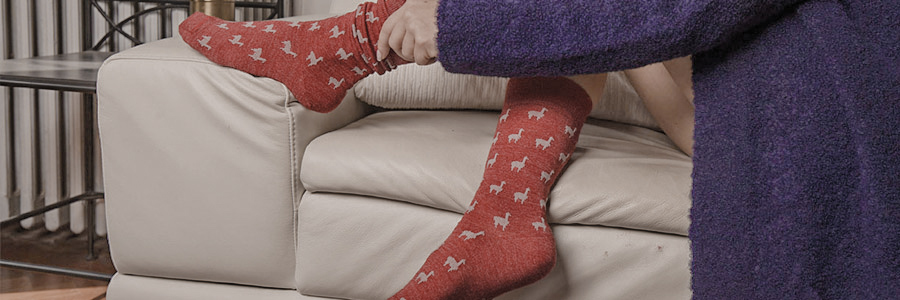
You can find it everywhere but very few people really know where cashmere comes from. The first thing to know is that this wool comes from the goat. It is when the winter season starts that a very soft down appears on the small goats of Tibet. Indeed, the goats producing the best and most cashmere are found in the highlands of the Chinese region and in Mongolia, mainly because of the ideal climate for the natural production of this coveted down. However, it is necessary to wait until the end of winter to harvest the wool because it is only at this time, with the rise in temperature that the goats naturally lose their coat.
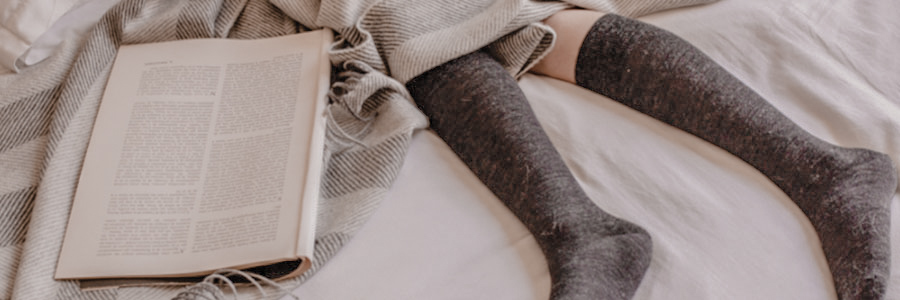
Depending on the different brands, we can see big differences in price for the same article. If we look at our famous cashmere socks for men we can see an exuberant difference between 2 pairs that, at first glance, look quite similar. Indeed, the amount of a pair of cashmere socks for men can go from a dozen euros to several hundred euros. But what justifies such a margin?
The main explanation comes from the simple fact that the quality of a fiber is measured by its fineness but especially by its length: the finer the fiber, the more pleasant/soft it will be and the longer the fiber, the stronger the spinning will be. Thus all the brands (often of large distribution) displaying a "100% cashmere hat" at only twenty euros have certainly used the technique known as "open end" which consists of extending a shorter and wider fiber. But unfortunately this practice makes your cashmere hat much more fragile than it already is. It will then tend to pilling very quickly and be less soft.
Another factor determining the price of your cashmere hat is related to the amount of cashmere used. Logically, a pair of men's socks made of 100% high quality cashmere will be more expensive than a pair of socks with 10% high quality cashmere. Finally, the place of production and labor will also play a role in determining the value of your pair of socks.

In recent years the climate situation is getting worse and the possibility of saving our planet is decreasing. A global awareness of the environment has therefore been created and many of us are now trying to adopt the most respectful way of life for our mother house. So, everyone is trying to do something at his or her own level: by using less polluting transportation, by eating less meat, by buying less food, etc.
And if you perfect your efforts by buying well while enjoying yourself? It's possible and easy! Let's get back to our socks, if I remember correctly they had to be comfortable, resistant, soft and warm to avoid having frozen feet and being constantly bothered by this sensation throughout the day. Naturally, many of us think that cashmere is the IDEAL material to fulfill all these needs. But in reality, there are other wools that have just as many wonderful properties or even more and are much less polluting. Because buying cashmere, without lying, is not good for the future!
This is linked to many things but mainly because of the animal that produces the soft down that is cashmere: the goat. Indeed, the goat consumes a frightening quantity of drinking water for the very little material it provides. To give you an idea, a goat can drink up to 10 liters of water per day and yet produce only 50 to 80 grams of cashmere per year. Thus it would take about 5 goats to make 1 cashmere sweater. The harvesting of the precious and expensive cashmere down incites Chinese and Mongolian breeders to enlarge their farms, thus reducing natural spaces and the well-being of other species such as the snow leopard.
In addition to the pollution linked to agriculture, there is also the pollution linked to production. Indeed, cashmere wool must be treated, bleached (by using bleach) and dyed before being sold in stores. These 2 steps are particularly harmful for the planet because they pollute the water and the whole food chain up to the human being. This is due to the fact that all the products used: pigments, solvents, chlorine are ingested by the plants and animals we eat. In addition to the ecological issue, there is the question of respect for animals. Although combing is sometimes used to remove goats' hair at the end of winter, it is not the most common technique used. Most of the time, goats are stretched out at the beginning of winter for profitability reasons and are thus more exposed to cold and disease.
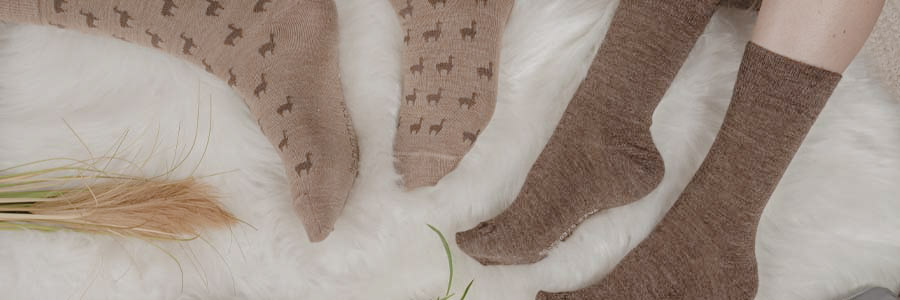
It is therefore preferable to choose alpaca wool for your socks. It will be just as soft, warm, silky and light but much more resistant and certainly more ecological than a pair of cashmere socks. Another advantage of alpaca wool socks for men is that they are thermoregulatory, a property that is particularly sought after when choosing socks because many people experience problems of unpleasant sweating when putting on warm socks or during physical activities.
We are now going to tell you a little more about alpaca wool. First of all, be reassured, when we talk about baby alpaca wool (the one used at Bellepaga), it is not baby alpacas that are stretched but it is in fact the name that is given to the fiber coming from the famous down that is hidden under the "classic" alpaca wool. Unlike our friends the goats, the alpaca can produce up to 2kg of this precious fiber, all without consuming 10 liters of water per day! In fact, an alpaca only drinks 2.5 to 4 liters of water per day. It therefore consumes less and produces more: fabulous, isn't it? Concerning the problem of pollution linked to the treatment and dyeing, our "wool of the gods" does not require these steps or very little. Indeed, the alpaca is the animal that has the greatest diversity of natural colors. Ranging from white to black through different shades of gray and brown, alpaca will naturally provide the color of hat you want, thus avoiding artificial dyes. As for our colored socks, at BellePaga, they are the result of a natural vegetable dyeing that respects the environment and your health. Moreover they are "design in Belgium" and made in Peru at a fair price with a deep respect for the alpaca. So you can wear trendy colors like forest blue on your feet without feeling guilty!
So if you are looking for quality socks with extreme comfort and softness that will keep you warm without sticking to your skin or making you sweat, forget cashmere and turn to alpaca. Our incredible Bellepaga socks, in addition to bringing you the same benefits as a pair of cashmere socks, will be much more resistant and will offer an absolute comfort to your feet in all circumstances thanks to its thermoregulatory and hypoallergenic properties. No risk of them pilling up after a hang-up on the floor or of them itching!

The origin of cashmere
You can find it everywhere but very few people really know where cashmere comes from. The first thing to know is that this wool comes from the goat. It is when the winter season starts that a very soft down appears on the small goats of Tibet. Indeed, the goats producing the best and most cashmere are found in the highlands of the Chinese region and in Mongolia, mainly because of the ideal climate for the natural production of this coveted down. However, it is necessary to wait until the end of winter to harvest the wool because it is only at this time, with the rise in temperature that the goats naturally lose their coat.

Surprising price differences
Depending on the different brands, we can see big differences in price for the same article. If we look at our famous cashmere socks for men we can see an exuberant difference between 2 pairs that, at first glance, look quite similar. Indeed, the amount of a pair of cashmere socks for men can go from a dozen euros to several hundred euros. But what justifies such a margin?
The main explanation comes from the simple fact that the quality of a fiber is measured by its fineness but especially by its length: the finer the fiber, the more pleasant/soft it will be and the longer the fiber, the stronger the spinning will be. Thus all the brands (often of large distribution) displaying a "100% cashmere hat" at only twenty euros have certainly used the technique known as "open end" which consists of extending a shorter and wider fiber. But unfortunately this practice makes your cashmere hat much more fragile than it already is. It will then tend to pilling very quickly and be less soft.
Another factor determining the price of your cashmere hat is related to the amount of cashmere used. Logically, a pair of men's socks made of 100% high quality cashmere will be more expensive than a pair of socks with 10% high quality cashmere. Finally, the place of production and labor will also play a role in determining the value of your pair of socks.

Cashmere a polluting material
In recent years the climate situation is getting worse and the possibility of saving our planet is decreasing. A global awareness of the environment has therefore been created and many of us are now trying to adopt the most respectful way of life for our mother house. So, everyone is trying to do something at his or her own level: by using less polluting transportation, by eating less meat, by buying less food, etc.
And if you perfect your efforts by buying well while enjoying yourself? It's possible and easy! Let's get back to our socks, if I remember correctly they had to be comfortable, resistant, soft and warm to avoid having frozen feet and being constantly bothered by this sensation throughout the day. Naturally, many of us think that cashmere is the IDEAL material to fulfill all these needs. But in reality, there are other wools that have just as many wonderful properties or even more and are much less polluting. Because buying cashmere, without lying, is not good for the future!
This is linked to many things but mainly because of the animal that produces the soft down that is cashmere: the goat. Indeed, the goat consumes a frightening quantity of drinking water for the very little material it provides. To give you an idea, a goat can drink up to 10 liters of water per day and yet produce only 50 to 80 grams of cashmere per year. Thus it would take about 5 goats to make 1 cashmere sweater. The harvesting of the precious and expensive cashmere down incites Chinese and Mongolian breeders to enlarge their farms, thus reducing natural spaces and the well-being of other species such as the snow leopard.
In addition to the pollution linked to agriculture, there is also the pollution linked to production. Indeed, cashmere wool must be treated, bleached (by using bleach) and dyed before being sold in stores. These 2 steps are particularly harmful for the planet because they pollute the water and the whole food chain up to the human being. This is due to the fact that all the products used: pigments, solvents, chlorine are ingested by the plants and animals we eat. In addition to the ecological issue, there is the question of respect for animals. Although combing is sometimes used to remove goats' hair at the end of winter, it is not the most common technique used. Most of the time, goats are stretched out at the beginning of winter for profitability reasons and are thus more exposed to cold and disease.

Socks for men in baby alpaca wool
It is therefore preferable to choose alpaca wool for your socks. It will be just as soft, warm, silky and light but much more resistant and certainly more ecological than a pair of cashmere socks. Another advantage of alpaca wool socks for men is that they are thermoregulatory, a property that is particularly sought after when choosing socks because many people experience problems of unpleasant sweating when putting on warm socks or during physical activities.
We are now going to tell you a little more about alpaca wool. First of all, be reassured, when we talk about baby alpaca wool (the one used at Bellepaga), it is not baby alpacas that are stretched but it is in fact the name that is given to the fiber coming from the famous down that is hidden under the "classic" alpaca wool. Unlike our friends the goats, the alpaca can produce up to 2kg of this precious fiber, all without consuming 10 liters of water per day! In fact, an alpaca only drinks 2.5 to 4 liters of water per day. It therefore consumes less and produces more: fabulous, isn't it? Concerning the problem of pollution linked to the treatment and dyeing, our "wool of the gods" does not require these steps or very little. Indeed, the alpaca is the animal that has the greatest diversity of natural colors. Ranging from white to black through different shades of gray and brown, alpaca will naturally provide the color of hat you want, thus avoiding artificial dyes. As for our colored socks, at BellePaga, they are the result of a natural vegetable dyeing that respects the environment and your health. Moreover they are "design in Belgium" and made in Peru at a fair price with a deep respect for the alpaca. So you can wear trendy colors like forest blue on your feet without feeling guilty!
So if you are looking for quality socks with extreme comfort and softness that will keep you warm without sticking to your skin or making you sweat, forget cashmere and turn to alpaca. Our incredible Bellepaga socks, in addition to bringing you the same benefits as a pair of cashmere socks, will be much more resistant and will offer an absolute comfort to your feet in all circumstances thanks to its thermoregulatory and hypoallergenic properties. No risk of them pilling up after a hang-up on the floor or of them itching!
-
Muju Socks - Classic
- 35 - 38
- 39 - 42
- 43 - 46
19,90 €
-
Sami Premium Socks - Classic
- 35 - 38
- 39 - 42
- 43 - 46
20,93 €
29,90 €
-30%
-
Incas Socks - Classic
- 35 - 38
- 39 - 42
- 43 - 46
19,90 €
-
Yupa Socks - Classic
- 35 - 38
- 39 - 42
- 43 - 46
19,90 €
-
Sami Premium Socks - Classic
- 35 - 38
- 39 - 42
- 43 - 46
20,93 €
29,90 €
-30%

